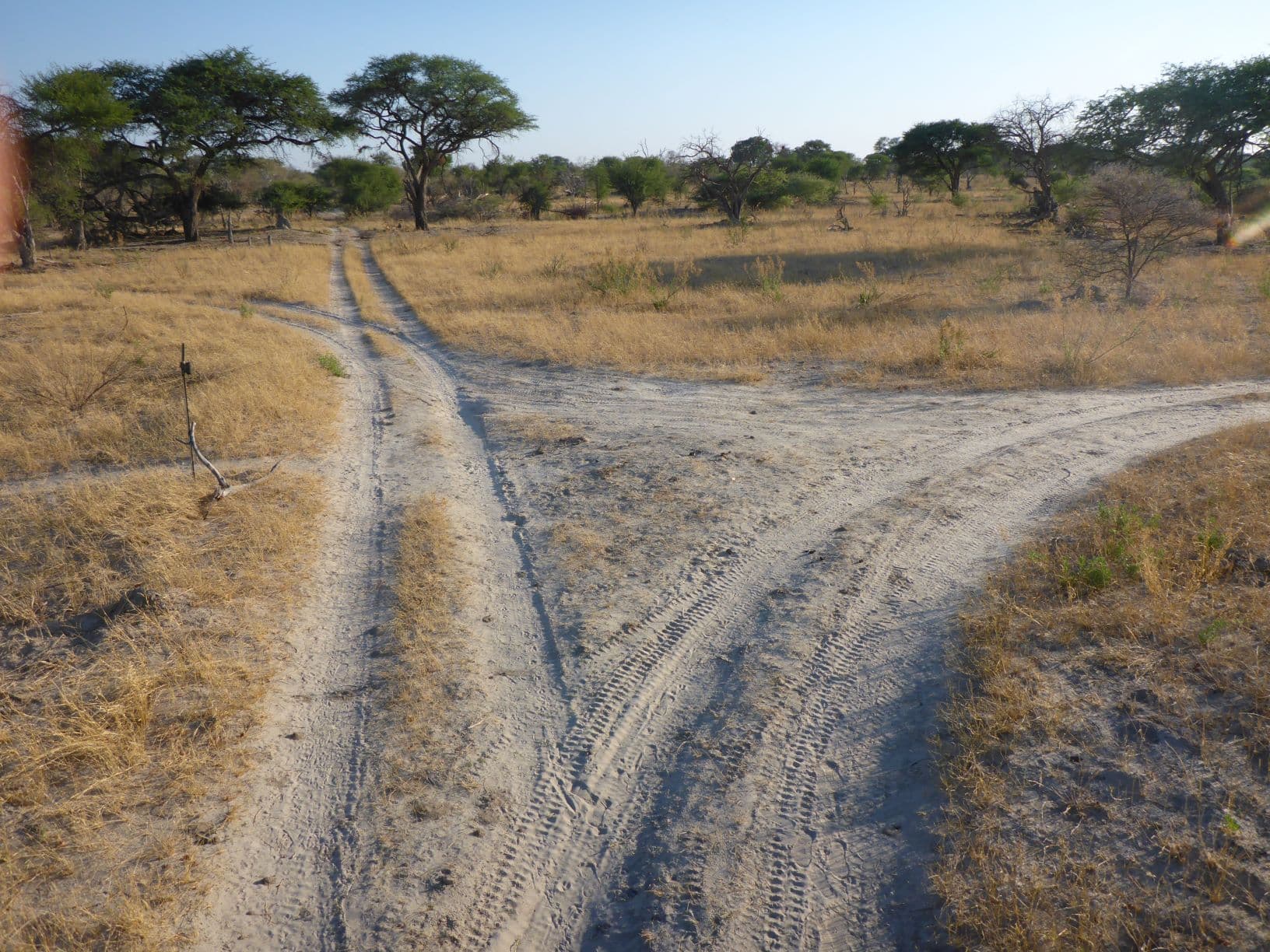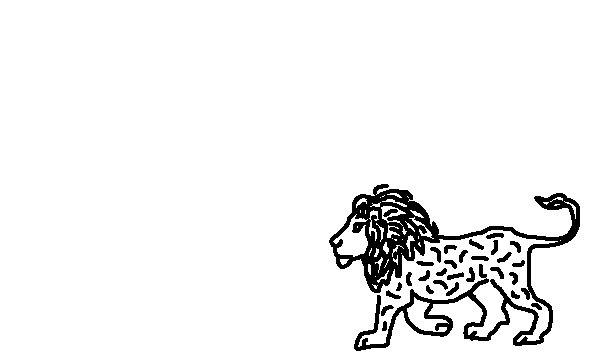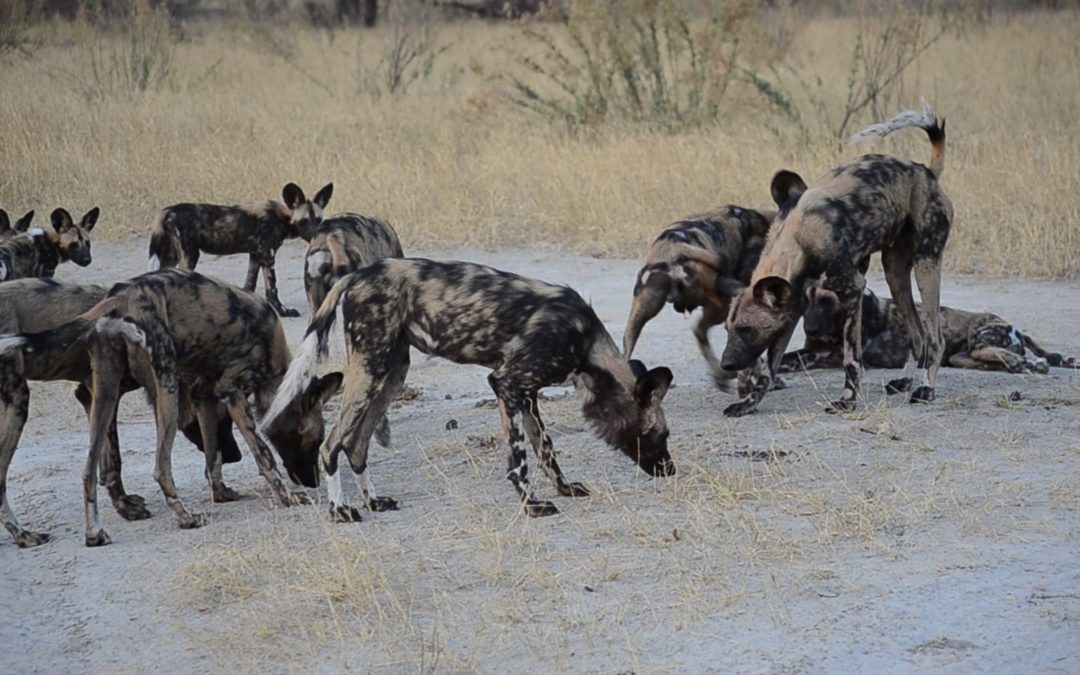African wild dogs are great travellers; for the nine months of the year that they are not denning with pups, they range over hundreds or thousands of square kilometres, covering up to 50 kilometres in a day. Sadly, the distances they cover across their huge home ranges take them outside the safety of protected wildlife areas and into human-dominated landscapes where they face the risk of lethal conflict with livestock farmers, snaring, and being killed on roads. That is why we are developing artificial territorial boundary markers,and why we need to understand how wild dogs organise their use of space.
A wild dog pack’s movements have no pattern that humans can discern,but they do not just wander randomly about; they have home ranges, and neighbouring packs usually stay out of one another’s core areas. How they know where their home range boundaries are and which areas are occupied has been a puzzle for along time; scent marking has always been a strong candidate for inter-pack communication, but nobody had been able to explain how such wide-ranging animals could even find one another’s scent, let alone react to it.
Then, in 2015 Botswana Predator Conservation Trust field researcher Megan Claase saw a wild dog pack scent marking where a group of dispersing females had marked about a month earlier. Out of curiosity, we monitored the site with camera traps, and as videos of repeated visits and scent marking by wild dog packs accumulated, it become clear that Megan had discovered something completely new;a shared, multi-pack, scent marking latrine.

The camera traps that monitored wild dog activity at the multi-pack wild dog marking site were serviced once a week
Even while the data was still being captured we could see that four packs were using the site, two whose home ranges overlapped the site’s location, and two from further away, and the intense sniffing that went on, followed by scent marking with urine and faeces, showed that the dogs were exchanging scent messages. The latrine was at the intersection of two dirt roads with a large game trail, wheretwo of the packs’ home ranges overlapped, a location that was easily accessible and likely to be encountered by other wild dogs travelling on the roads.

The intersection of two dirt roads where multiple packs of African wild dogs repeatedly scent marked
Untangling the fine details of how the dogs used the markingsite involved painstakingly sorting through thousands of videos, identifying the dogs and recording the behaviours captured by the cameras, and then even more painstaking analysis of the data. What emerged from the first year’s videos were the first systematic records of scent communication between packs of African wild dogs, and a more detailed understanding of scent communication than is available for any other wild carnivore.
Visits to the latrine were brief; half of them lasted 5 minutes or less, which may be why nobody had previously recognised that African wild dogs use shared marking sites. The visits being so short, and most visits being in the early mornings and evenings as the dogs ended or began their twilight and nocturnal activities, suggested that they just dropped in at the site when they passed by on hunting trips, but they also visited in the middle of the night around the new moon when it was too dark for them to be hunting.
Dominant dogs scent marked every time they visited the site, but subdominants markedonly rarely, male dominants urinated at the site nearly 140 times as often as male subdominants. The subdominants that did scent mark all later dispersed from their packs or changed social status, a connection between scent marking and social mobility that had never been recorded before in a wild species.

In the foreground of this clip from a camera trap video, the dominant pair of Apoka pack, Darius and Seronera, scent mark with urine while Titan,a subdominant male defecates in the background.
Scent marking visits were an average of 15 days apart, and there was a 66-day run of surprisingly regular visits at 10- to 13-day intervals, the first record of wild dogs regularly revisiting anywhere except a breeding den. Bywatching which older scent marks were sniffed and marked, we made the first measurements of the minimum times for which wild dog scent remains active; 10 days for urine and 20 days for faeces.
The dogs’ sniffing and counter-marking of scent from previous visits showed that the shared marking site acted as a scent message bulletin board, with at least 12 exchanges of information between packs over a period of 13 months. The pattern of visits,and the dogs’ behaviour at the site, especially their intense responses to otherpacks’ marks, leave no doubt that the latrine was specifically used for scent marking, and that African wild dogs visited it to gather information on previous visitors, and to send scent messages to other wild dogs.
The discovery of the shared latrine, the detailed data from the camera traps on how wild dog packs exchange scent messages there, and finding more marking sites in the overlaps between home ranges are the key to understanding how the packs organise their use of space, and a critical step in our production of artificial territorial boundary markers that will keep wild dogs safely inside protected wildlife areas.
The dogs are still using the multi-pack marking site four years after Megan first discovered it, and thanks to support from the St LouisZoo’s Wildcare Institute https://www.stlzoo.org/conservation/wildcare-institute we can now monitor an additional 14 sites. More about that in a later blog.

Written by
Peter Apps, PHD


Dive straight into the feedback!Login below and you can start commenting using your own user instantly